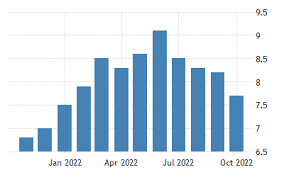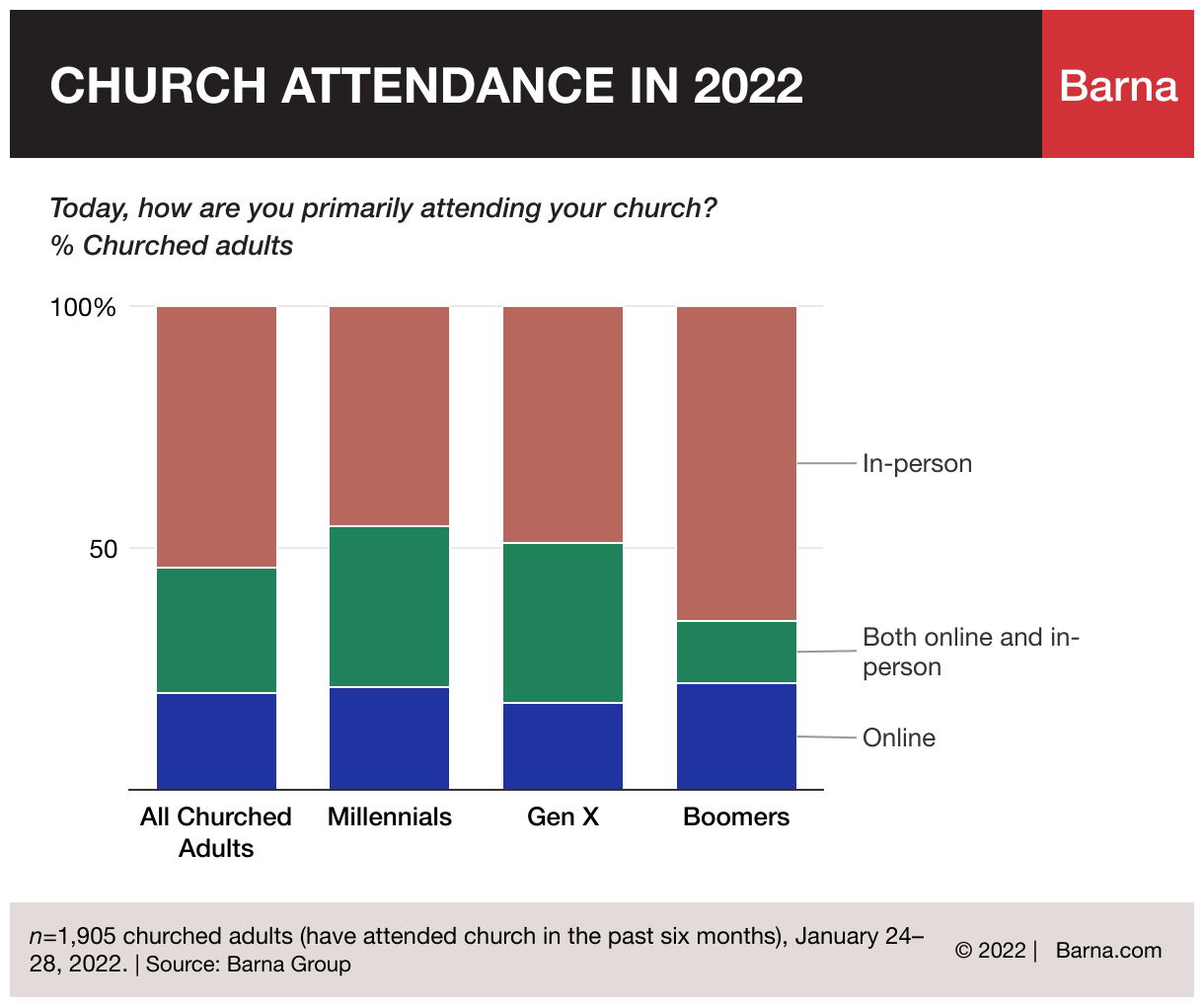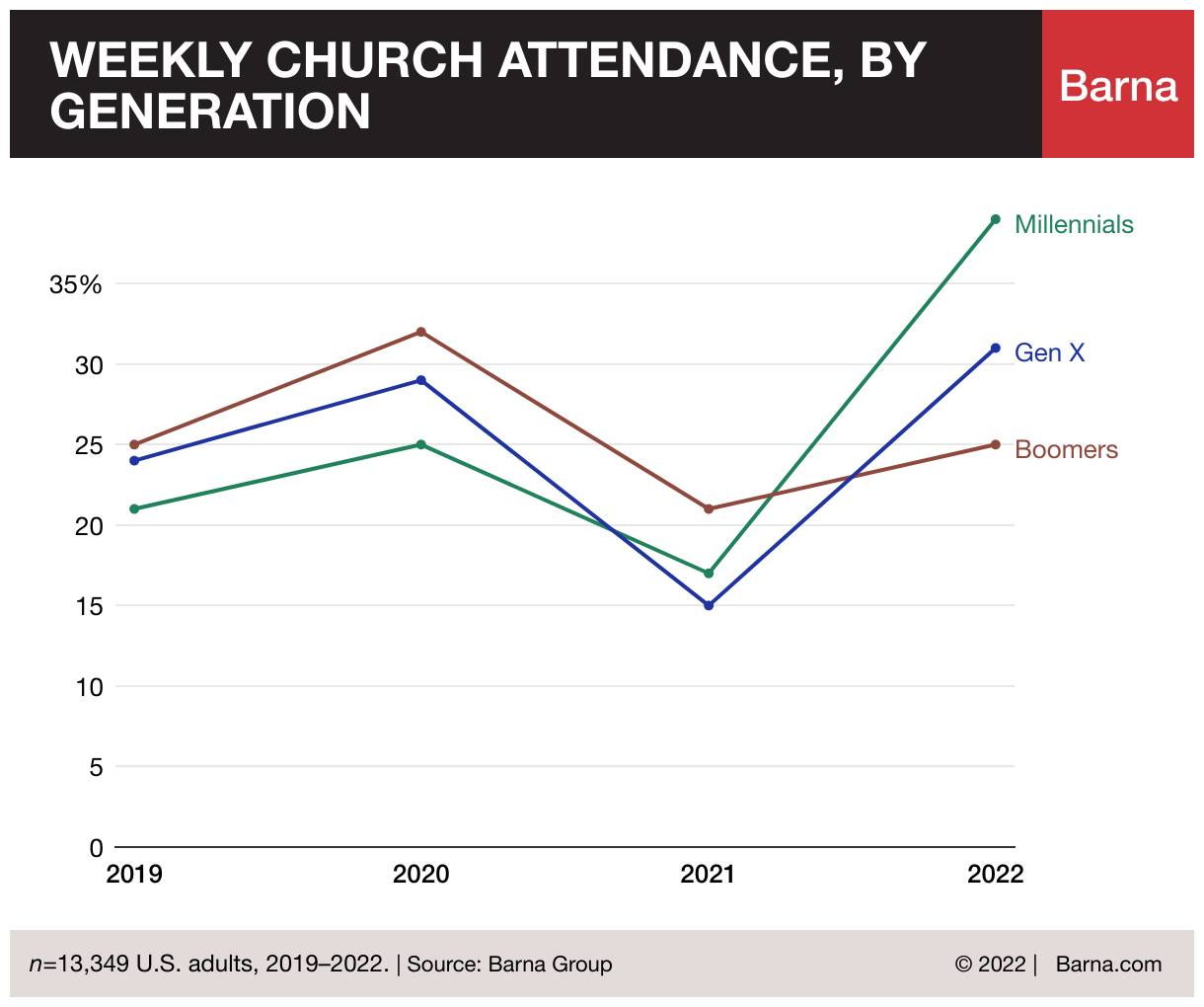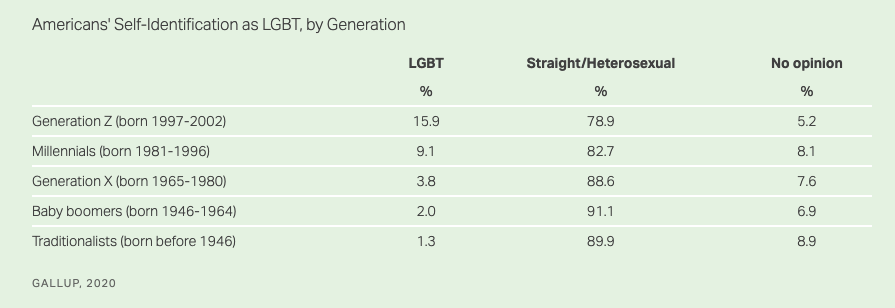Church leaders are always looking for ways to grow their churches and reach more people. And knowing the latest 2023 church statistics can be a game changer!
Knowledge is valuable and diving into these church statistics will equip you to plan better. With the research and references in this post, you can measure progress, identify growth opportunities, and create effective church plans.
We cover 17 statistics in the post below, ranging from cultural shifts to insider church info. Let’s dive in!
Previous Editions of Church Statistics
- Church Statistics 2022
- Church Statistics 2021
- Church Statistics 2020
- Church Statistics 2019
- Church Statistics 2018
Estimated reading time: 16 minutes
Table of contents
- Top Church Statistics 2023
- 1. In-Person Church Attendance
- 2. Staffing and Facilities Are the Major Budget Items for Churches
- 3. Smaller Churches Are Experiencing Higher Turnover
- 4. The Majority of Church Givers Have Zero Credit Debt
- 5. Inflation is Impacting Churches
- 6. Online Church Giving Option is Most Popular
- 7. Confidence in Major U.S. Institutions Has Dropped
- 8. American’s Trust in Pastors Has Decreased
- 9. Concerns With Pastor Burnout
- 10. Use of Social Media
- 11. Millennials Like Online Church
- 12. Belief in the Bible
- 14. GenZ Identity and Sexuality
- 15. Christianity Has Declined in Great Britain
- 16. Stress is Overwhelming for Many Americans
- 17. Churches Are Planning to Add Staff in 2023
- More Ways to Engage Members
Top Church Statistics 2023
1. In-Person Church Attendance
For the past couple of years, the COVID pandemic and the impact of 2020 have been at the top of everyone’s minds. You may be fed up with talking about it, but 2020 had a marked impact on in-person attendance and the rise of online church.
According to Pew Research, one in five churchgoers in 2022 participated in virtual church once a month.
And 57% did not attend in person or watch online. This stat is not for the general population, it’s for Americans who typically attend services monthly.
So, you can’t assume that people not attending in person are watching online. The majority are not attending any services at all.

2. Staffing and Facilities Are the Major Budget Items for Churches
A survey by the Unstuck Group reports that 52% of church budgets go to staffing expenditures like salaries, benefits, and payroll taxes. On average, churches spend an additional 17% on buildings and facility expenses.
In total, many churches are spending an average of 69% on staff and facilities. Which leaves less than one-third of the budget for ministry programs, outreach, and other expenses.
3. Smaller Churches Are Experiencing Higher Turnover
According to the U.S. Bureau of Labor Statistics, the annual turnover rate was 47.2% in 2021. Turnover can include voluntarily quitting, layoffs, retirements, and discharges.
In other words: not all turnover is bad.
But an interesting fact in the church world is that small churches under 200 people report a higher staff turnover rate. According to the Unstuck Group report, small churches have seen a 22% staff turnover rate. While large congregations of more than 1,000 experience a 13% turnover rate.
4. The Majority of Church Givers Have Zero Credit Debt
Nonprofits Source reports that eight out of ten people who give to churches have zero credit debt. And it’s not surprising that families in a secure financial position are more comfortable giving.
Just because Christians have debt doesn’t mean that won’t still be willing to give. However, leaders should consider the importance of financial health in their church, which isn’t just about getting more donations.
Consider providing resources, such as Dave Ramsey’s Financial Peace curriculum, and equipping your congregation. Wise stewardship benefits everyone on all levels. And it change’s peoples’ view of tithing and generosity when they are financially secure.
5. Inflation is Impacting Churches
Here’s an important church statistic for 2023. Overall, churches report that giving has been flat over the past five years. But we heard regularly in the news throughout 2022 that inflation was increasing dramatically.
Inflation impacts the costs of food, transportation, energy, utilities, and other items.
Church giving increased by 3.6% last year to some reports. But that doesn’t come close to matching the high inflation rates in the 7-10% range we saw in 2022.
All faith based groups should take rising costs into account when budgeting. There is no guarantee that church giving will match rising costs, so be wise with your financial resources.

6. Online Church Giving Option is Most Popular
Online giving is the number one way people tithe and donate to their church, superseding checks and cash. Statistics also show that adding an online giving option increases church donations by 32%.
Giving online is often easier and more convenient. It also makes it easier to set up recurring monthly giving.
At this rate, growing churches should prepare to offer multiple ways for church members to give electronically and make sure they are prepared to handle any technical issues or security concerns.
7. Confidence in Major U.S. Institutions Has Dropped
Across the board, Americans are less confident in major institutions like government, news, banks, and newspapers.
Unfortunately, only 31% of those surveyed by Gallup reported that they had a great deal/quite a lot of confidence in the church or organized religion. And on that note…
8. American’s Trust in Pastors Has Decreased
Along with decreased trust in religion as an institution, Americans are also more skeptical of pastors than in the past. This data comes from a survey rating the honesty and ethics of various professionals.
When it comes to religious workers, only 39% of Americans rate clergy as having very high/high honesty and ethical standards on a five-point scale. On the other hand, nurses are rated at 89%, medical doctors at 77%, and grade-school teachers at 75%.
If you’re a pastor, don’t be discouraged by this statistic (or the previous about religious institutions). We share these numbers because it’s important for our church leaders to realize that trust has to be earned, not assumed. Being transparent and communicating regularly and openly can help to build trust.
9. Concerns With Pastor Burnout
Sadly, many pastors have considered quitting full-time ministry within the past year.
And younger pastors are even more likely to be affected. About 46% of pastors under 45 are considering quitting, while 34% over the age of 45 feel the same. But that’s still a lot, over one-third!
Reasons for pastor burnout include conflict, schedule, stress, and lack of support from church members.
Fortunately, there are resources available to help team members in full-time ministry navigate through difficult times. The most important thing is to acknowledge how you’re feeling and ask for help.

Pastor’s Mental Health Report
10. Use of Social Media
Social media use is widespread and 4.7 billion people are using it worldwide. Clearly, churches have a significant opportunity to reach people with social media communication, but are they taking advantage?
FellowshipOne reports that 85% of churches find their congregation is on Facebook. In addition, 15% use Twitter, and 15% use Instagram.
It’s wise to be active on Facebook, which is the most popular social media platform in the world. But keep in mind that other channels exist and can help you reach even greater numbers of people.
11. Millennials Like Online Church
Since the pandemic, most churches are meeting back in person. But many have made the shift to offering weekly online worship services.
Barna found that 22% of Boomers and 21% of Millennials are attending church primarily online. For Boomers, online church could be a welcome alternative for those who have challenges getting to church, are homebound, or have health concerns.
However, the majority of Boomers, 65%, primarily attend in person. Only 45% of Millennials are in-person attenders.
One-third of millennials report that are attending both online and in-person. Your church should consider the impact on ministry with a large portion of their congregations regularly tuning in via live stream. What does that mean for evangelism, ministry tools, video content, and your website?
12. Belief in the Bible
Gallup has polled Americans on their view of a literal interpretation of the Bible since 1976. The most recent poll reveals a record low.
Just 20% of US adults believe the Bible is the actual word of God. While 49% believe it’s the inspired word of god, 29% believe the Bible is an “ancient book of fables.”
When it comes to Christian adults, the numbers shift slightly. About 25% of Christian adults believe the Bible is the actual word of God, 58% believe it’s the inspired word of God, and 16% believe it’s a book of fables.
So when it comes to sharing scripture, pastors also need to consider the underlying beliefs and understandings of the Bible held by guests and members. This may mean laying a foundation for the historical context and validity of the Bible.
13. Millennials Are Showing an Increase in Church Attendance
Around one-quarter of Millennials were attending church weekly in 2019. Of course, we saw drastic dips in church attendance through the 2020 pandemic across the board.
However, more recent data shows that numbers are shifting upward. The change is most marked among Gen X and Millennials.
In addition, Barna has broken these numbers down by race. They found that 45% of non-white Millennials are weekly church attenders in comparison to 35% of white Millennials.
14. GenZ Identity and Sexuality
Gallup reports that 5.6% of US adults consider themselves to be lesbian, gay, bisexual, or transgender. This is up from 3.5% in 2012.
This number greatly increases for younger generations. One in six young adults in Generation Z considers themselves to be LGBT. That means some families in your church undoubtedly fall into this category.
The Church hasn’t always done a good job of addressing cultural issues, especially those related to gender and sexuality. But members of your congregation are hearing tons about it from every other part of society. Churches will not be able to avoid this conversation in the future.
15. Christianity Has Declined in Great Britain
A poll published in The Guardian caused quite a stir. The leading headline is that Christianity is now a minority religion. Less than half of the population of England and Wales now describe themselves as Christian.
This is a steep drop compared to a similar poll from a decade earlier. The next most popular response after Christianity was “no religion” and 37.2% of people in England and Wales fell into this category.
Great Britain has played a key role in the advancement of Christianity throughout history. It’s important to take note of cultural shifts happening not just in America, but around the world.
16. Stress is Overwhelming for Many Americans
A recent APA survey showed that Americans are extremely stressed out! Inflation was a source of stress for 83% of adults. Other financial concerns like having enough money to pay for present needs and being able to save for future needs are also significant sources of stress.
Overall, the report also showed that for US adults
- 70% don’t think people in the government care about them
- 64% feel their rights are under attack
- 75% of black adults, 70% of Latino adults, and 69% of Asian adults feel the racial climate is a significant source of stress
Furthermore, you can see in the chart below that stress levels are extremely high for younger adults. For women ages 18-34, 62% said they feel completely overwhelmed by stress most days. And the same is true for 51% of men in this age group.
Clearly, addressing stress and the factors that contribute should be a priority for churches in the coming year.

17. Churches Are Planning to Add Staff in 2023
According to the Unstuck Group, 42% of churches are planning to add staff in 2023 while 10% of churches anticipate staff reductions.
Overall, churches with less than 200 people have a ratio of one staff person for every 34 people in attendance. Churches with over 500 in attendance have a ratio of one staff person for every 46 people in attendance.
Additionally, 38% of small churches have current job openings versus 76% of large churches.
Thinking through church hires is vital going into each new year.
How Can Church Leaders Apply these Statistics?

Church leaders can significantly benefit from leveraging national church statistics to enhance the effectiveness and growth of their own congregations.
By utilizing these insights, they can make informed decisions and implement strategic changes tailored to the specific needs and trends prevalent within their respective communities.
Here are 7 ways church leaders can apply national church statistics to improve their church:
Understanding Demographics
National church statistics provide comprehensive data on the demographics of various regions, including age groups, ethnicities, and socioeconomic backgrounds. By analyzing this information, church leadership can tailor their outreach programs, sermon content, and community engagement initiatives to cater to the specific needs of their congregation.
For example, our number 13 statistic was on an increase in millennial church membership. By understanding an increasing millennial demographic in your church, you can begin to tailor the content of sermons, small groups, and retreats to fit their needs, questions, and lives.
Identifying Trends
Analyzing national church statistics enables leaders to identify prevalent trends in religious practices, preferences, and beliefs. By understanding these trends, they can make informed decisions about the types of programs and services to offer.
This can ensure that their church remains relevant and appealing to both existing church members and potential newcomers.
If you look at our number 9 on this list, you’ll see that pastor burnout is on the rise. By identifying that trend, you can begin to already make decisions to help prevent that from happening in the future. This will in turn keep your church healthy and strong, and avoid the pitfalls that other churches are falling into.
Adapting Technology
National church statistics often highlight the impact of technology on religious practices and community engagement. You can leverage this data to adopt relevant technological tools and platforms that enhance communication, outreach, and engagement with the congregation.
This could include integrating online streaming services, developing interactive apps, or implementing social media strategies tailored to the preferences of the target audience.
If you saw numbers 1 and 6 on our list, you know that the popularity of church online is increasing, as well as online giving. With this understanding, it’s important to begin to implement easily accessible digital options for your church. And if you don’t have anyone on your team comfortable in that realm, it’s important to begin looking to hire someone who can help out on the digital side.
Community Outreach and Involvement
National church statistics can shed light on the specific needs of the community, such as social issues, economic challenges, and educational disparities. Your leaders can utilize this data to design outreach programs and initiatives that address these needs directly.
By actively involving the congregation in community service and outreach projects, churches can establish a positive reputation and foster meaningful connections with the local community.
Number 10 showed us that churches have significant outreach over social media. How can you leverage this to support and help your local community? Using social media outlets could be vital in gathering support and volunteers for your outreach program. It can also be a way volunteers help spread the word: by posting about it on their social media platforms.
Budget Allocation
Analyzing national church statistics can also aid in the effective allocation of financial resources. Leaders can use this data to prioritize areas that require more investment, such as youth programs, community services, or infrastructure improvements.
This ensures that the church’s financial resources are utilized efficiently and effectively, thereby maximizing the impact of its initiatives.
If we look at number 17 on the list, it’s important to take a look at your church’s plans regarding staff. Are you increasing staff, reducing, or neither? How will this impact the budget allocation, and how can you start preparing for it now?
Number 5 also showed us that inflation is heavily impacting churches. With this knowledge, you can run your financial data with this in mind. If you are not making room for inflation in your budget plans for coming years, now would be the time to start doing so. It could be the thing that keeps your church from going under.
Measuring Impact
By comparing their church’s performance with national church statistics, leaders can assess the effectiveness of their strategies and programs. This evaluation allows them to make necessary adjustments and improvements, ensuring that the church remains aligned with the evolving needs and preferences of the congregation and the broader community.
For example, number 3 talked about the high turnover rate for small churches. If you’re a small church, this is an important statistic to measure against. If you are also experiencing high turnover, it may be time to start shifting programs or making adjustments to prevent that. If you are not experiencing high turnover, keep doing what you are doing! In fact, share it with other small churches in your community to help them out as well!
Building Partnerships
National church statistics can help identify potential opportunities for collaboration and partnership with other churches, religious organizations, and community groups. By leveraging these connections, church leaders can expand their outreach and impact, foster unity within the community, and collectively address common challenges or goals.
Number 12 revealed that belief in the Bible is on the decline. How has your church been handling the way it teaches the Bible or presents it to church members? There are tons of amazing organizations out there specifically meant to help churches with teaching the Bible. Building partnerships with them would be beneficial to both of you and could even start to get those numbers back up!
Using Statistics
In essence, incorporating national church statistics into their decision-making processes enables church leaders to make data-driven choices that are more likely to resonate with their congregation and the broader community.
By remaining adaptable and responsive to the changing dynamics of society, church leaders can ensure the continued growth, relevance, and impact of their church in today’s rapidly evolving world.
Church Statistics 2023

Hopefully, you find the REACHRIGHT church statistics 2023 edition interesting, but we also hope it’s helpful to you.
Remember that every church and situation is unique. You can’t make assumptions that everything said here applies to you. But at the same time…don’t assume that it doesn’t!
Staying on top of trends and changes can help you and your team preach on relevant topics and connect to both members and new guests. Ultimately, we can address all of these challenges as we spread the gospel and keep our hope in Christ.
Let 2023 be your best year yet!








Comments 2
This analysis is really Great! Have You consider the churches here in Africa or you gave the analysis considering US and London?
It’s indeed very helpful to me!!!
Pastor Jah
First Baptist Church GUYUK. Nigeria!
Thank you so much Pastor Jah! Most of these statistics are based on surveys and studies of US residents.